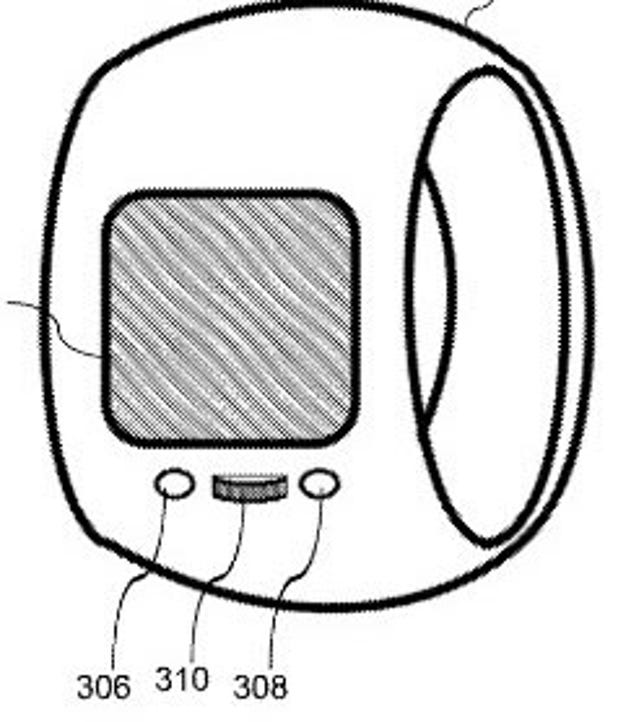
Apple/USPTO
Apple could hit the world of wearable devices with a smart ring, at least if a recently-published patent application ever rings true with an actual product.
A patent filing called “Devices and Methods for a Ring Computing Device” published on Thursday by the US Patent and Trademark Office imagines a wearable device that you’d wear on your finger instead of your wrist. Like today’s lineup of smartwatches, the smart ring would be outfitted with certain features to function on its own but would also control and access your smartphone.
Apple’s invention of a smart ring would include features already part of the Apple Watch. The ring would offer a small display, a built-in microphone and camera, motion sensors and haptic feedback to provide vibrations and other sensations in response to certain tasks. You would communicate with the ring using taps and touch gestures as well as speech input. A biometric sensor could even detect how you hold or position your hand. For example, extending or curling up your ring finger could trigger a certain command, while making a fist with your hand would trigger a different command.
Even assuming Apple is serious about one day marketing and selling such a smart ring, some hurdles lie in wait. Unless you don’t mind wearing a really big ring, the small screen size would be a limiting factor. Battery life could be an issue as a device that tiny may not be able to house a big battery. And with people just now latching onto the concept of smartwatches, a smart ring might prove a hard sell. How many mobile devices do we really need to carry around? Smartphone. Smartwatch. Smart ring. Still, the design sounds intriguing in how far Apple might take it.
Beyond controlling your finger, Apple’s smart ring could control other devices such as a smart TV, a set-top box such as an Apple TV, a computer, tablet, smart home appliance and even the audio or entertainment system in your car.
One intriguing concept involves two people, both of whom are wearing the smart ring. By shaking hands, the two could exchange messages, information and even money with each other. As an example cited by Apple, “the user may say ‘by shaking hands with Steve I agree to give him $20,’ which is recorded and converted to text and/or computer instructions, such that when the user shakes hands with Steve, and the user’s ring is detected by an external device or a second ring worn by Steve, $20 is paid to Steve.”
The concept of a smart ring isn’t exactly new. Some products already exist, mainly as a way to control or access your smartphone. A company called Ringly sells a lineup of rings that can alert you to incoming phone calls, emails, text messages and other content coming through on your phone. A $25 gadget called the iRing responds to the gestures of your hand to play music on an iOS device.
But an Apple smart ring would go beyond current rings to perform certain tasks on its own and not serve just as a remote control for other devices. The key is not just whether Apple can perfect the technology but whether it could sell consumers on this type of a wearable gadget.
(Via AppleInsider)



